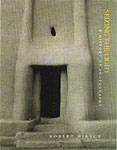![]()
Book Reviews
Question: Do we really need another historical overview of photography? Answer: Why not?
As we enter the brave new millennium with its dire implications for the future of silver-based imagery, it doesn’t hurt to glance back at two centuries of photography and see how the developments and trends of the past continue to inform the present and the future.
Photographer and teacher Robert Hirsch has taken on this formidable task in Seizing the Light, an engaging interpretive chronology that traces the technical and artistic trends of the medium through the 19th and 20th Centuries. From Joseph Nicephore Niepce’s first camera images in the early 1820s to the digital manipulations of latter-day artists like Nancy Burson and Pedro Meyer, Hirsch charts the medium with the objectivity of the historian combined with the subjectivity of the creator.
In eighteen succinct chapters, Hirsch not only delineates the movements, events and innovations that have shaped the medium, but also the changing social and cultural parameters against which the meaning of the photographic image has been reflected. The reader is thus afforded a greater sense of the context in which photographers have been motivated to either record or interpret reality with the camera. The text is intelligent, informative and, as in the chapter on social documentary photography, often quite moving. And you’ve just gotta love anyone who can reference the film “Blow-Up” and the writer J.G. Ballard in successive paragraphs, as Hirsch does in writing about fashion photography.
Hirsch ends his book with a thought-provoking section on digital photography. While ceding digital’s potential for opening up new ways of seeing, he also sounds a warning note about the gap between those who can afford the new technology and those who cannot.
If there’s one caveat regarding Seizing the Light it is the lack of quality reproduction. The author concedes in the preface that the reproductions are but “approximations” of the originals, and he advises those looking for an aesthetic experience to seek out the real thing in galleries and museums. Acknowledging the problem does not excuse it, however, and it’s a shame that the visual quality of this book doesn’t rise to the level of the text.
Dean Brierly admits to being a former editor of Camera & Darkroom magazine. He is currently a freelance contributor to photography and film journals, and is a lifelong silver-based photographic image maker.
| By: Dean Brierly From Vol. 1 No. 3 |
 |
As we enter the brave new millennium with its dire implications for the future of silver-based imagery, it doesn’t hurt to glance back at two centuries of photography and see how the developments and trends of the past continue to inform the present and the future.
Photographer and teacher Robert Hirsch has taken on this formidable task in Seizing the Light, an engaging interpretive chronology that traces the technical and artistic trends of the medium through the 19th and 20th Centuries. From Joseph Nicephore Niepce’s first camera images in the early 1820s to the digital manipulations of latter-day artists like Nancy Burson and Pedro Meyer, Hirsch charts the medium with the objectivity of the historian combined with the subjectivity of the creator.
In eighteen succinct chapters, Hirsch not only delineates the movements, events and innovations that have shaped the medium, but also the changing social and cultural parameters against which the meaning of the photographic image has been reflected. The reader is thus afforded a greater sense of the context in which photographers have been motivated to either record or interpret reality with the camera. The text is intelligent, informative and, as in the chapter on social documentary photography, often quite moving. And you’ve just gotta love anyone who can reference the film “Blow-Up” and the writer J.G. Ballard in successive paragraphs, as Hirsch does in writing about fashion photography.
Hirsch ends his book with a thought-provoking section on digital photography. While ceding digital’s potential for opening up new ways of seeing, he also sounds a warning note about the gap between those who can afford the new technology and those who cannot.
If there’s one caveat regarding Seizing the Light it is the lack of quality reproduction. The author concedes in the preface that the reproductions are but “approximations” of the originals, and he advises those looking for an aesthetic experience to seek out the real thing in galleries and museums. Acknowledging the problem does not excuse it, however, and it’s a shame that the visual quality of this book doesn’t rise to the level of the text.
Dean Brierly admits to being a former editor of Camera & Darkroom magazine. He is currently a freelance contributor to photography and film journals, and is a lifelong silver-based photographic image maker.



